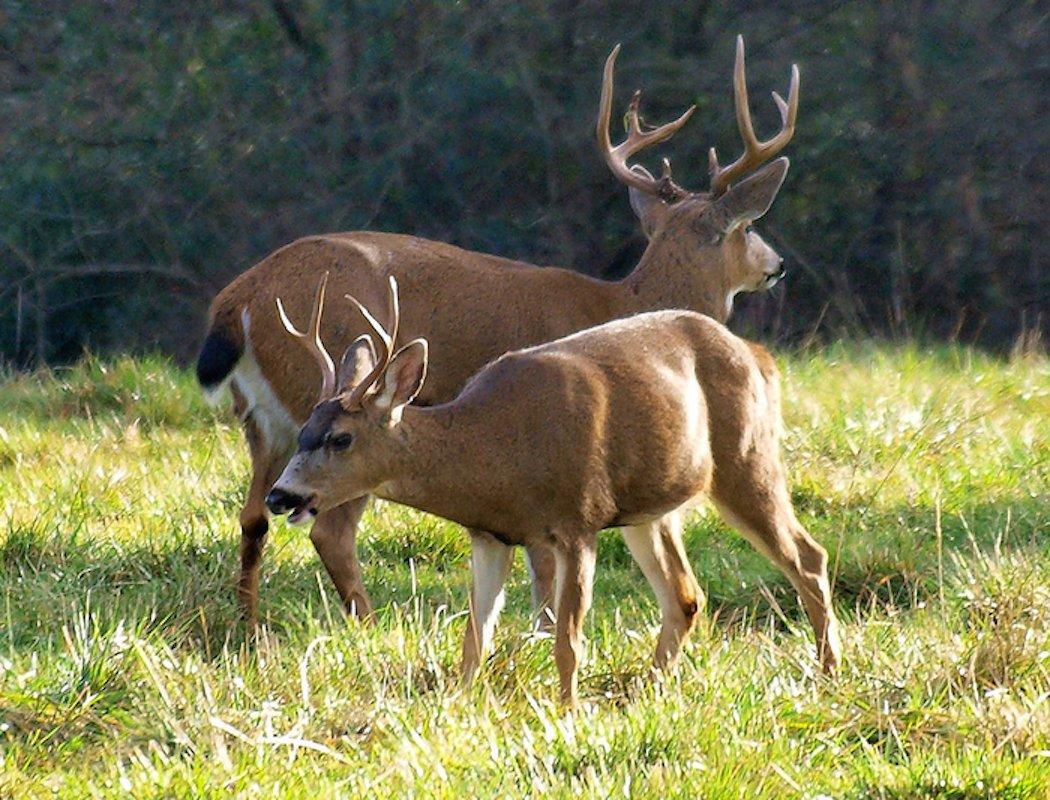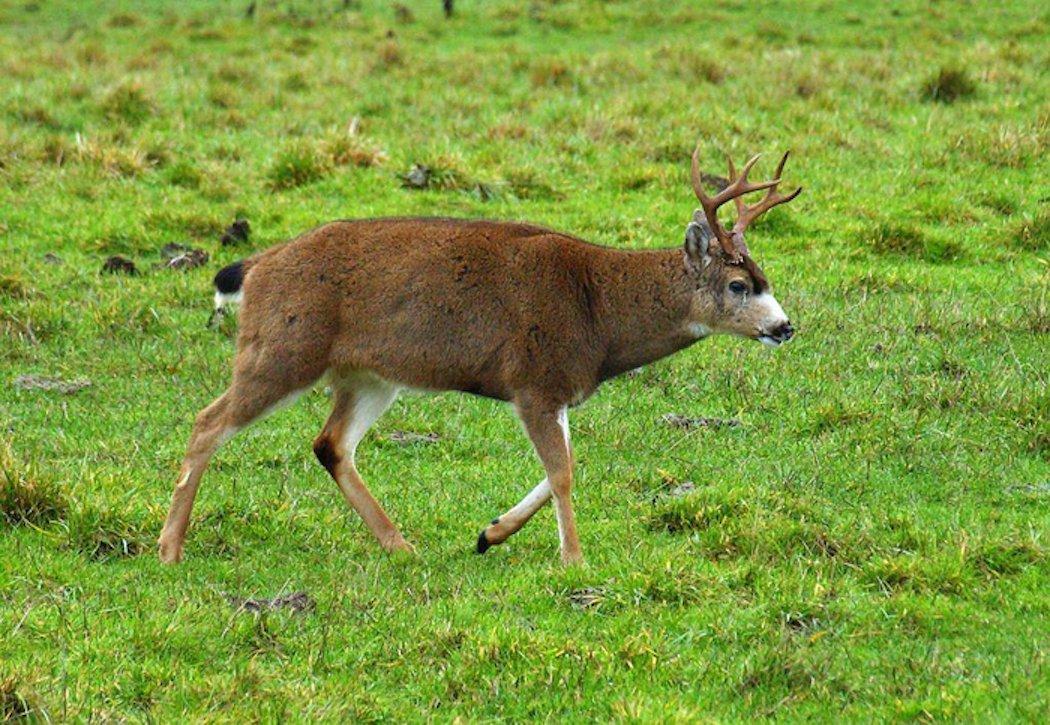They're Elusive, but Fun to Hunt
The Columbian Blacktail is known to many veteran hunters as the Pacific Ghost due to its ability to appear from the shadows for a brief moment, then disappear at the blink of an eye as if it were never there. These masters of deception are considered to be the most difficult species of deer to bowhunt throughout the western states. They are highly elusive and cunning animals that depend solely on their stealth-like movements, highly sensitive noses, superb eyesight and acute hearing as their main line of defense. Most trophy-class blacktails have the tendency to become nocturnal as hunting pressure increases, but terrain and habitat also play a large role in their ability to vanish within the shadows like ghosts, rarely to be seen again.
Found in California, Oregon and Washington, Colombian Blacktails make their home in some of the densest cover and old-growth timber within these coastal states. Although mature blacktail bucks rarely expose themselves during the day, they sometimes will briefly let their guard down and feed in small open pockets within heavily forested areas during dusk and dawn. To successfully fill your tag, it takes time, patience, sweat and a thorough understanding of their behavioral patterns in order to achieve success.
Hunting Tactics
Your method of hunting in a specific area will depend solely on the terrain and the type of hunt you're on. There are three effective tactics commonly used by blacktail hunters: spot and stalk, still-hunting and the use of treestands. Of the three, my most enjoyable method to hunt blacktails is spot and stalk, but my most successful and effective method is to hunt them from a treestand overlooking a well-worn game trail within a natural funnel of trees. Over the years, I've taken many mature bucks from treestands without them having a clue of my presence.
Treestand hunting is probably one of the best methods for a hunter to remain undetected while hunting black-tailed deer, especially in terrain where still hunting is not feasible. Hunting from a treestand has its advantages. Not only does it allow you to remain still and not be heard, but also decreases the chance of a buck seeing or scenting you.
There are many different types of treestands on the market today such as portable/fixed-position stands, climbing stands, ladder stands and tripod stands. I prefer a portable/fixed-position stand because of its versatility.
The Rut
Usually the pre-rut in northern California begins in late September to early October, but sometimes it can begin earlier. I've found the rut to start in different locations during different times of the month. For instance, 70 miles south of where I hunt the pre-rut usually begins two weeks earlier. About 200 miles north of me, it begins about three weeks later.

Throughout the years, I've rattled in a number of black-tailed bucks during the rut. Some were just curious to see what the commotion was, while others came running in prepared for battle. When a dominant blacktail is in rut, he will not tolerate another buck trying to breed does. From my treestand I've watched bucks lock horns and fight for over 20 minutes straight until the stronger of the two emerges as the victor and chases the weaker buck out of the area. Grunt tubes and bleat cans also work very well during this time of the year. I use them primarily to gain a buck's attention and use his own curiosity to lure him within range.
To be successful at hunting blacktails year after year, you must commit a tremendous amount of time in the field studying their behavioral patterns until you almost think like one of them. Find out where they eat and drink, where they sleep, how they react to changing weather systems, what trails they use during the morning as compared to the evening, find their transition zones, their summer and wintering grounds, migration routes, and areas where the big bucks appear like clockwork each year during the rut. With this information, a hunter's success rate can increase incredibly, sometimes even being able to single out and hunt one particular buck. In my opinion, more time in the field equals greater chances of success. Nothing comes easy, especially when dealing with the Pacific Ghost.
Basic Equipment Needed

Backpack Frames: Semi-rigid frames are very lightweight and bend with your body's movements. They can also be converted into a pack frame for carrying your meat by easily removing the main carrying bag. Try to keep your pack at about 40 pounds for a three-day hunt, and no more than 60 pounds for a 6- to 10-day hunt.
Tents: When purchasing a three or four season tent, take into account your spike camp location, the time of the year you plan to hunt, the elements pertaining to high elevations and your personal needs as far as comforts go.
Sleeping Bags: The most important piece of equipment for a wilderness hunt is a warm, lightweight sleeping bag. Be sure to choose wisely.
Stoves and Lanterns: Today's technology has made these items ultra light, compact and fuel-efficient.
Water Purification System: Pump your filtered water into a convenient hydration system that can be carried in your pack and easily accessed to keep you hydrated while hunting.
First Aid & Survival Kit:
- GPS
- Radio
- Flashlight
- Magnesium fire starter
- Water proof matches
- Emergency solar blanket
- Knife
- Parachute Cord (60 feet)
- Trail map
- Signal mirror
- Trail ribbon
- Emergency whistle
- Mole skin
- Band Aids
- Lightweight ankle brace
- Power Bars and Goo
Editor's note: This was originally published in 2009.
Click here for more deer hunting articles and videos.
Check us out on Facebook.







